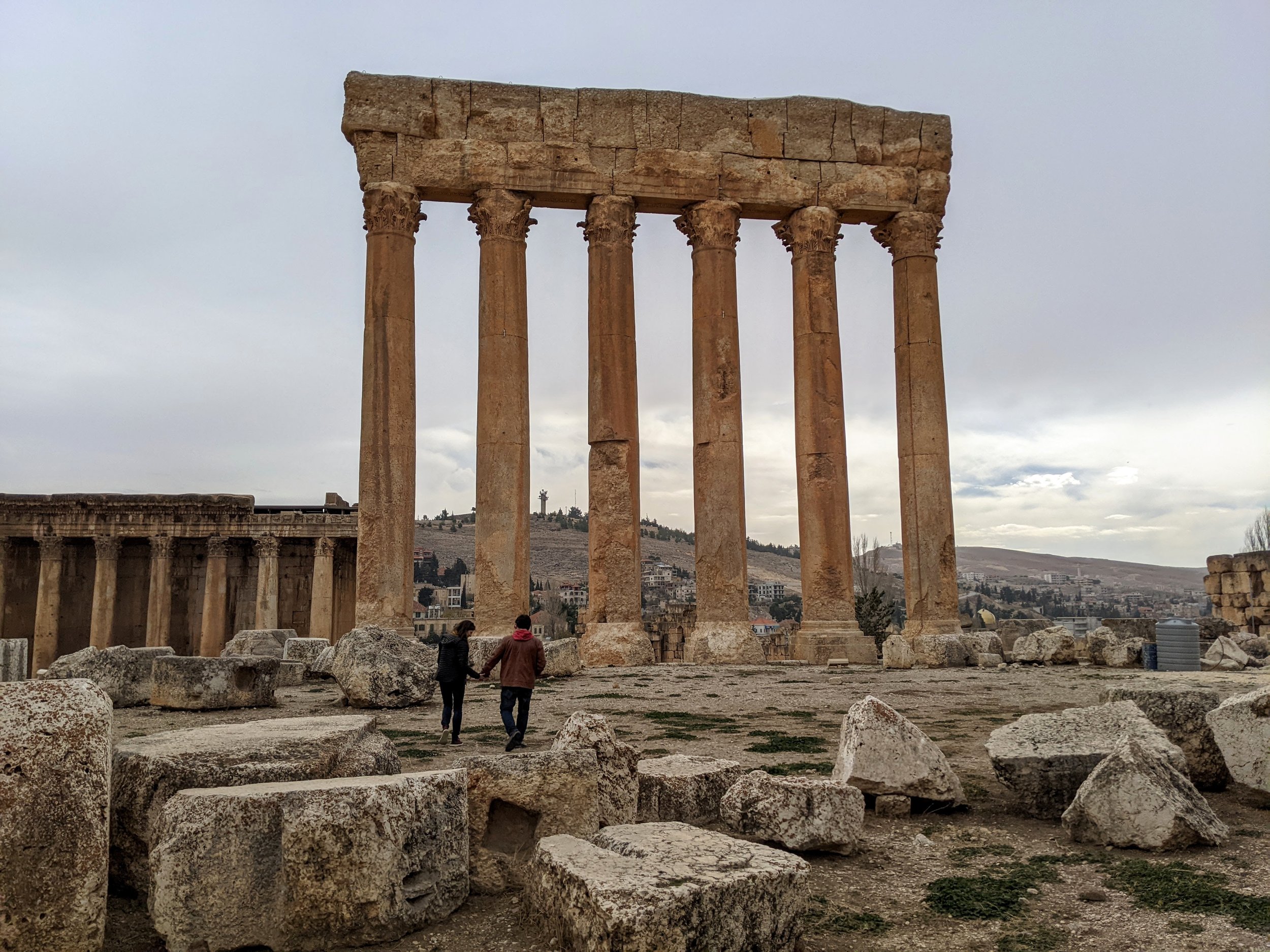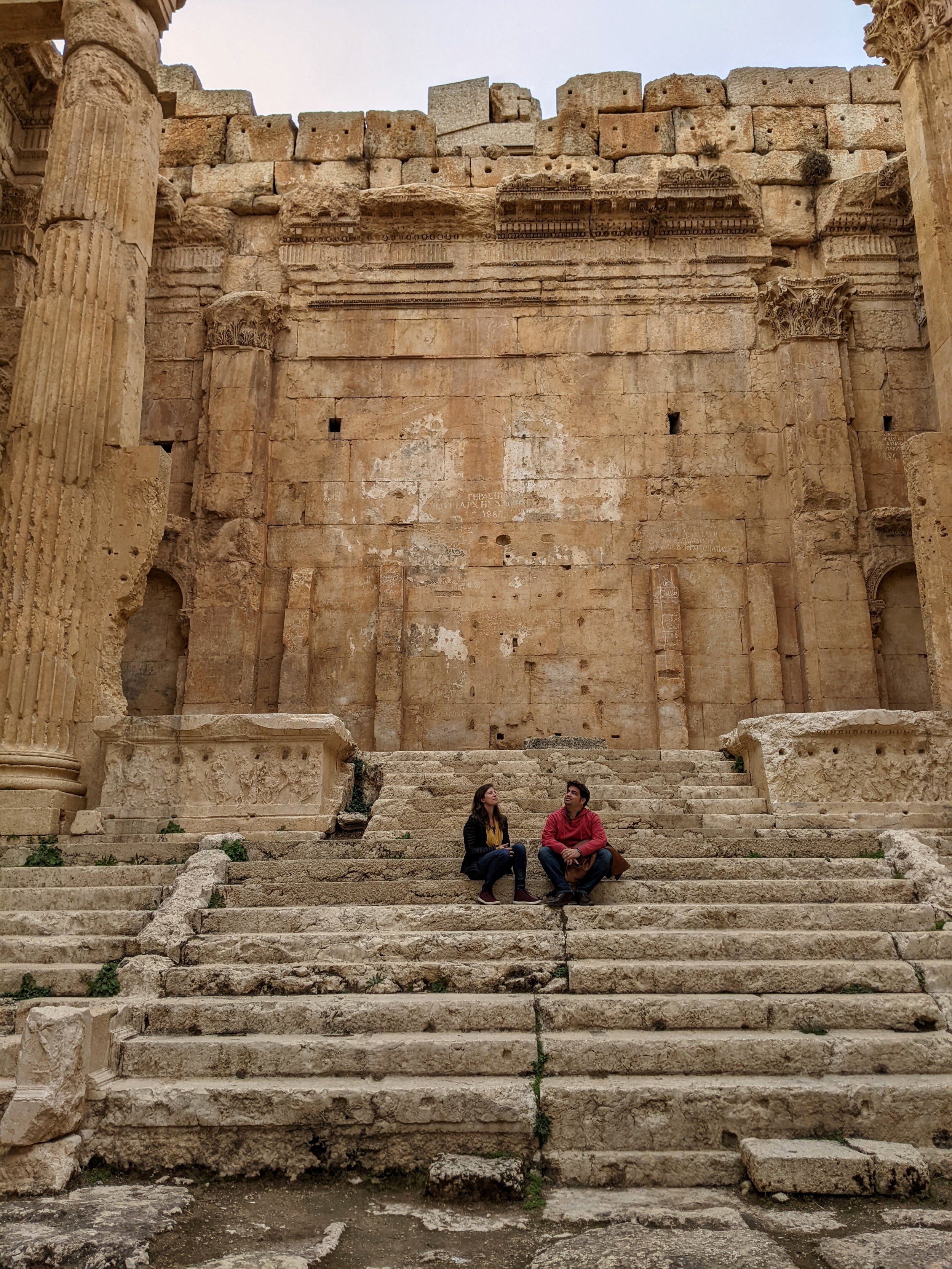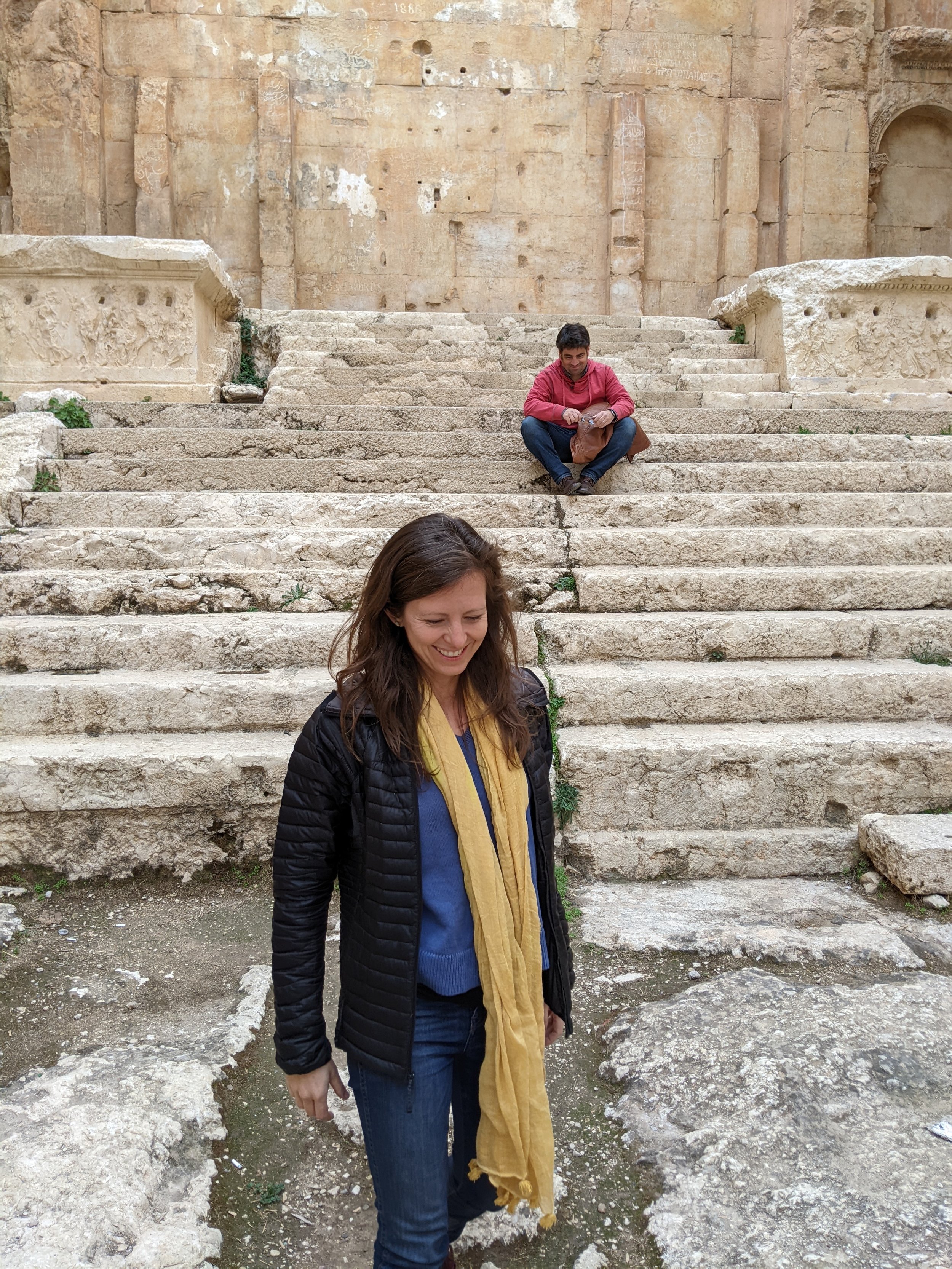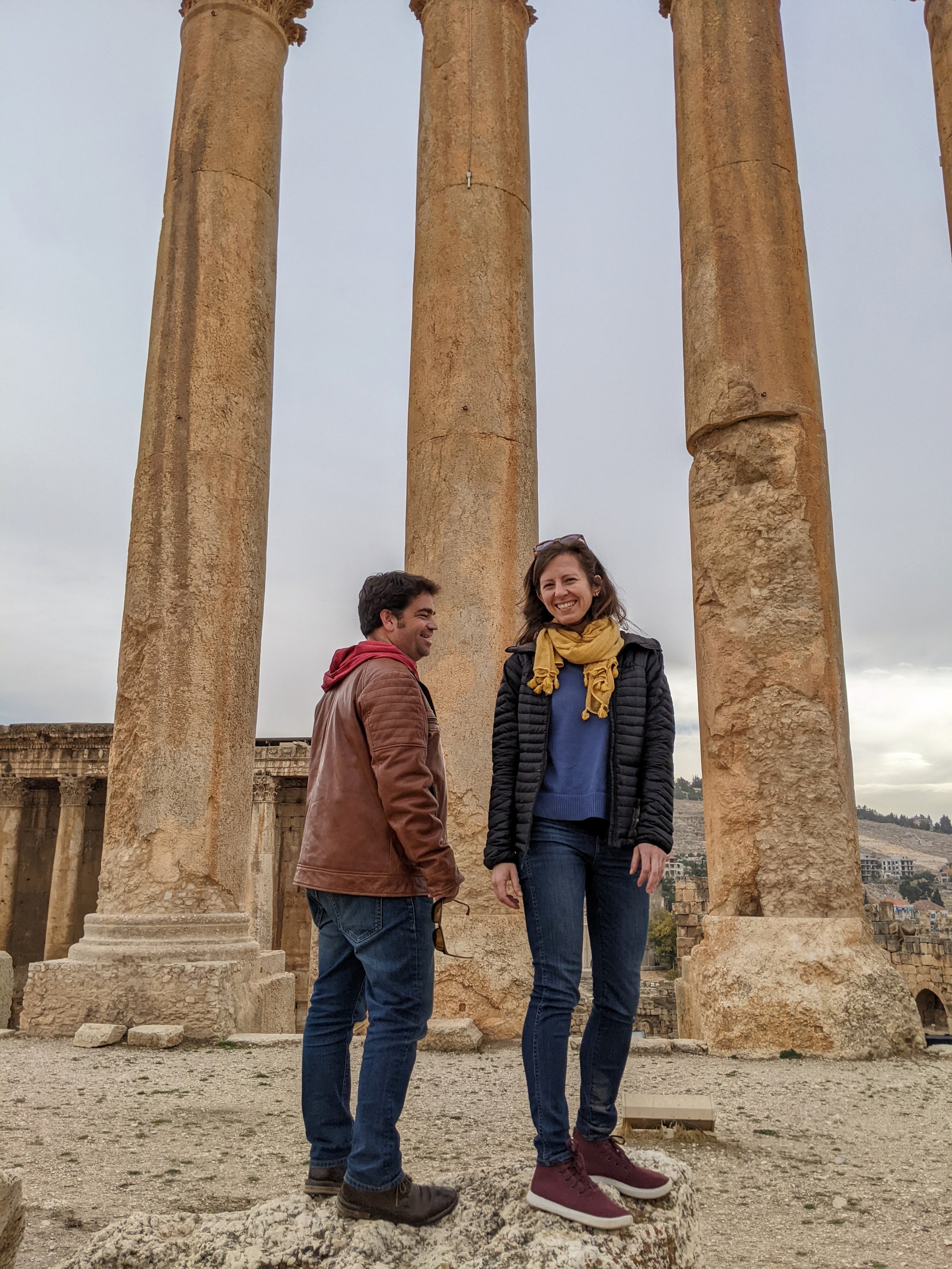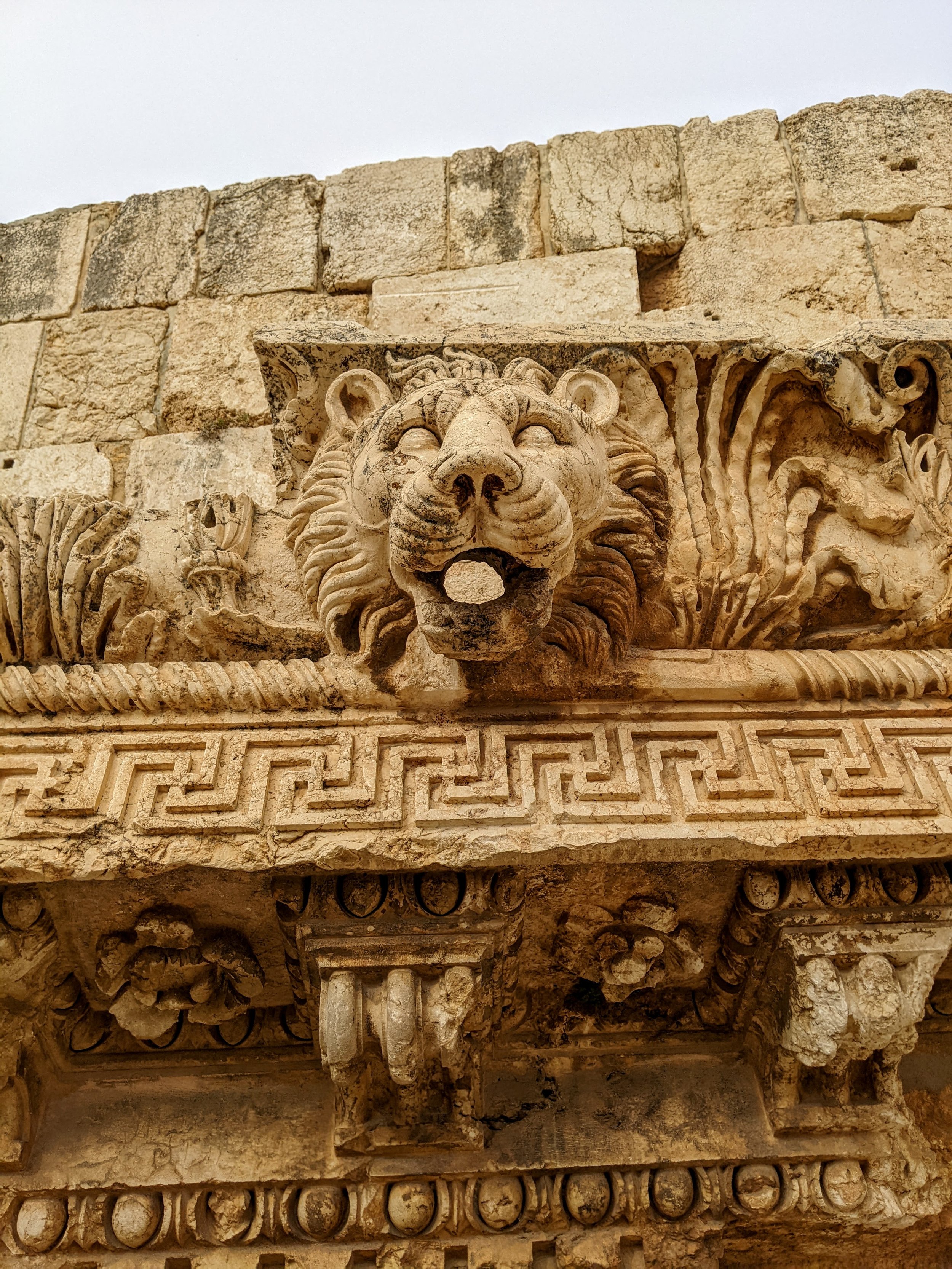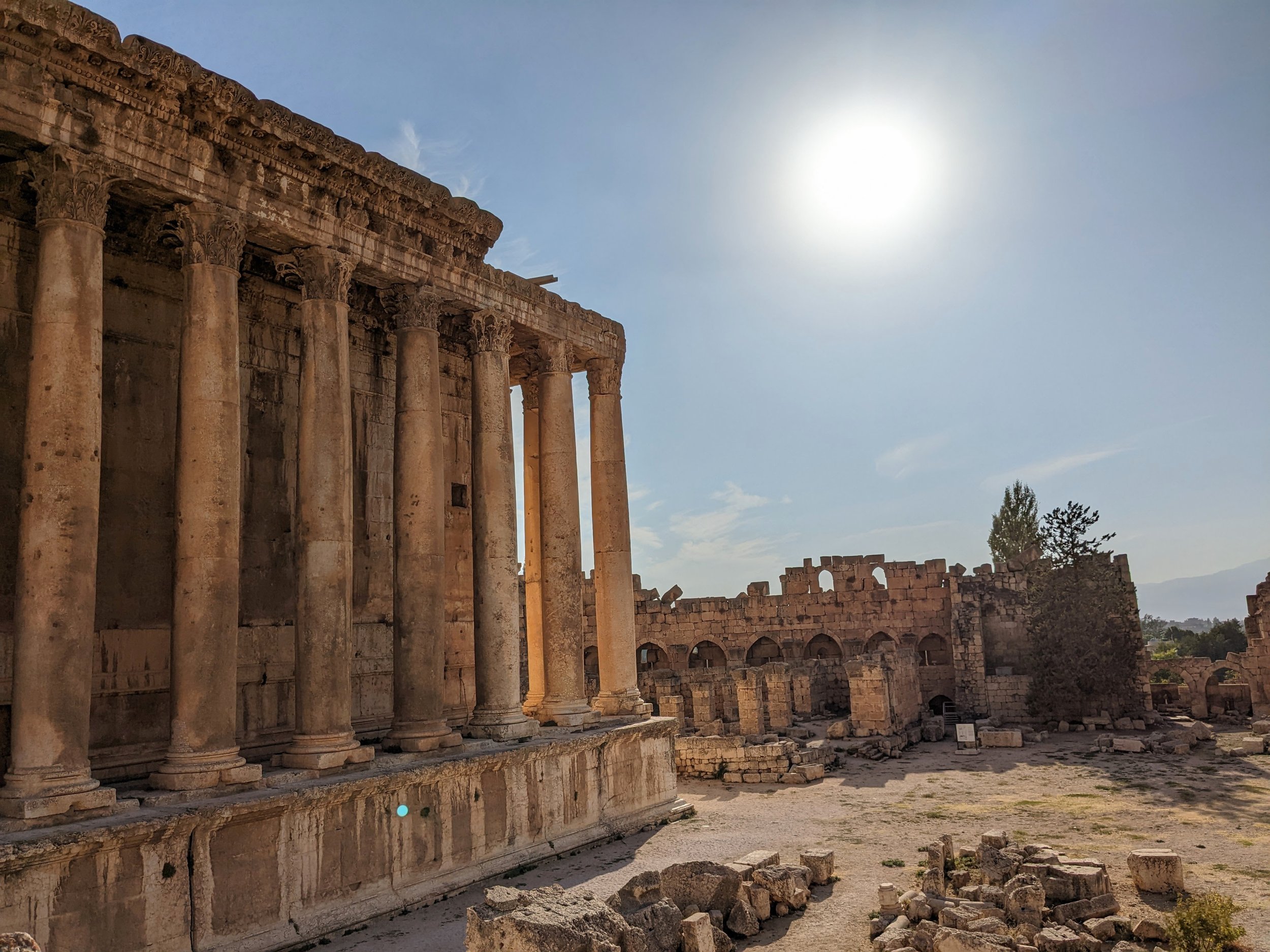lebanese dispatch: baalbek
My dear friend,
On a walking tour of Beirut last year, our guide kept bringing us to beautiful, abandoned places: one-time high-end hotels, fancy apartment complexes, public gardens. When we asked her what the spaces were used for now, she would gesture toward a couple of Lebanese teens taking selfies a few yards away. “Now?” she repeated. “Mostly for photo-shoots.”
I thought of this reply when we visited the ruins of Baalbek a few days later. Our group consisted of two other people, one of whom was a woman who was very committed to photo shoots. I was tempted to scoff at her pastime, telling myself that my own photographs are different because they focus more on the site than they do on me. But isn’t a photo shoot still a photo shoot, regardless of the subject?
I stopped worrying over this distinction when the woman offered to take some pictures of C. and me. In fact, I was so pleased by the attention and the framing that I started handing my camera over at every crumbling pillar or pedestal we came across!
In a photo series called “Theatre of Authenticity,” artist Natacha de Mahieu “explores the link between tourism and spectacle, and how we perform when we travel, particularly when we think no one is watching.” De Mahieu came up with the idea after scrolling through travel photography on Instagram. She said that she was struck by “the feeling that everyone is going to the same places, using the same photographic compositions, the same colours.” She decided to visit those places and, instead of cropping people out of her images, she added more people to them.
This is very different than the way I typically attempt to photograph, which involves waiting—sometimes for a very long time, usually with growing impatience—for random strangers to move out of the frame. I learned this from my father: I remember standing beside him in various far-flung and beautiful places while he, too, waited for the perfect half-second when the grand staircase or marble columns would be fleetingly, miraculously, empty.
Now I find myself wondering: why do we want to pretend that we’re the only ones here?
Since tourists are not, at the moment, flocking to Lebanon, I found that I didn’t need to wait very long for a shot that would be empty of people. More often than not, we found ourselves alone.
On the one hand, I can see the absurdity of the photo shoot. I know we all spend too much time taking photographs of ourselves, of our surroundings. I understand that the lens and the screen may actually diminish our experience instead of enhancing it.
On the other, I wonder what else we should be doing when confronted with the majesty and wonder of a place like Baalbek. Should we just be walking and thinking? Sitting and talking? Once upon a time, Baalbek was a religious complex; then it was a military fortification. But we have come here neither to pray nor to fight. Is a photo shoot really, I am beginning to wonder, so terrible after all?
Like everywhere else in Lebanon, Baalbek is comprised of many layers—literally—of history and archeology. Named for the Phoenician God Baal, the site subsequently passed into the hands of the Greeks, the Egyptians, the Romans, the Arabs, and the French.
There are two main structures here: a massive Temple of Jupiter, whose ruins are still striking despite the damage inflicted by time and weather, earthquakes, the scavenging of stones for other projects (the Emperor Theodosius used some of Jupiter’s Temple for a basilica in 379 AD; the Emperor Justinian repurposed a set of Corinthian columns and had them shipped to Constantinople to be used in Hagia Sophia between 532 and 537), the occupation of the Muslim army, the barracks of the Crusaders, and various other invasions and occupations up through the Lebanese Civil War at the end of the 20th century.
Yet, despite it all, the temple still inspires awe and wonder: the grand staircase leading to its entrance….
… the hexagonal courtyard (the only one of its kind in the Roman world)…
… and the remaining pillars framing the sky.
The other major structure is the Temple of Bacchus, with a beautifully preserved courtyard surrounded by 42 massive columns. This temple, too, served many purposes over the centuries—including as a military fortification for Arab and Turkish armies.
Inside, I craned my neck to admire the carvings of grapes and cherubs at the very tops of the pillars. C. climbed up the steps to the altar and examined graffiti from tourists of the past. The scribbles he found were mostly from 1888, or thereabouts, written in French, Arabic, and English.
I wanted to recreate one of the photographs we’d taken six months ago, during our first visit. But since there was no one around but us, I had to prop my phone up on a rock, set the ten-second timer, and sprint to the steps so that I could position myself beside C. before the digital shutter made its silent click.
Is the impulse to photograph ourselves in strange and beautiful places the same as the impulse to scratch our names on stones, on bridges, on trees? Are these pictures supposed to leave traces of us? Or are they a means of carrying some of the wonder and magic of that space away with us?
In his novel De Niro’s Game, Lebanese-Canadian author Rawi Hage has his narrator contemplate picture-takers at the Eiffel Tower:
Tourists like little ants strolled under the monster’s metal feet. They looked up at it, protecting their eyes with small plastic cameras, posing underneath it like smiling statues, pressing their index fingers on tiny buttons to suck the light from their smiling faces, and to record the passing of time in latent images that were proof of their existence and the impermanence of their lives.
The image is dismissive enough to make a person stop wanting to take pictures at all!
But in On Beauty and Being Just, Elaine Scarry writes that beauty “brings copies of itself into being. It makes us draw it, take photographs of it, or describe it to other people.”
What is the felt experience of cognition when one stands in the presence of a beautiful boy or flower or bird? It seems to incite, even to require, the act of replication. Wittgenstein says that when the eye sees something beautiful, the hand wants to draw it.
I like this theory because it means that the pictures I take are adding to the world’s store of beauty. I may not be able to build a temple—but I can frame it, refract it, share it.
Maybe that’s not nothing.
The truth is that it’s impossible for a visitor to grasp, in an afternoon’s visit, the layers of history, the span of centuries, or the spiritual significance of a place like Baalbek. We are simply too small; our own timelines and imaginations are too constrained. In a New Yorker essay on the massive stones that still confound archeologists today, Elif Batuman (I love her novel The Idiot) remarks that the temple complex of Baalbek “is a monument to the mystery of place, to the synthesis of West and East, real and imaginary, present and past.”
At the end of the day, as I scroll through the images that are slowly filling up my phone, I think that maybe my own photo shoots are not intended to be a record my presence, or a war against human impermanence, or even a replication of beauty—but rather an attempt to capture and contain, like a firefly in a mason jar, a sense of that uncapturable, uncontainable mystery.
Yours—L.


